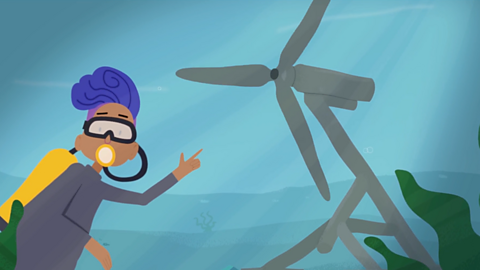What are volcanoes?
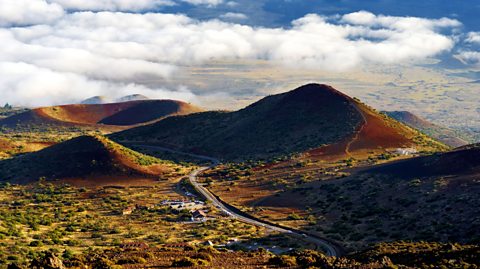
Volcanoes can look like small mountains or hills.
A volcano is an opening in the Earth's crust that allows magma, hot ash and gases to escape.
What types of volcano are there?
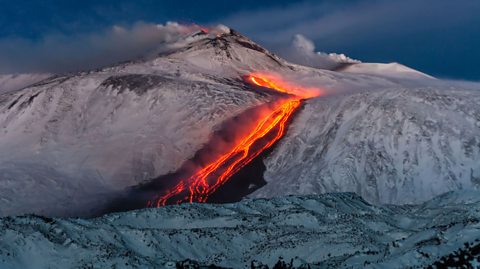
There are two main types of volcano:
Composite volcanoes are the most common type of volcano. They can have violent eruptions and can grow bigger as layers of thick lava and ash harden on top of each other. Mount Etna in Sicily, Italy, is an example of a composite volcano.
Shield volcanoes do not have such violent eruptions. These volcanoes tend to have gentle slopes and their runnier lava spreads and hardens over a wider area. Mauna Loa in Hawaii is an example of a shield volcano.

Watch: Volcanoes
I’m in Italy visiting a very famous volcano called Mount Vesuvius.
A volcano is an opening in the Earth’s crust, which allows hot magma, ash and gases to escape from below the surface.
I’ve been asked by my fellow explorers to get some rock samples from Mount Vesuvius, but it’s an active volcano, so I’ll need to watch out for things like lava flow.
Lava is very hot molten or liquid rock, which reaches over 1,000 degrees. So I’ll need to stay at a safe distance!
Volcanic ash. Clouds of ash can rise miles into the sky and block out light from the Sun, changing temperatures across the land and damaging aeroplanes in flight.
Pyroclastic flow. Hot gas, ash and rock mixed together to make a deadly cloud that flows down the side of the volcano.
It’s not all bad. They can also be tourist attractions!
The lava and ash from an eruption breaks down to provide valuable nutrients for the soil and is great for growing crops!
So, even though volcanoes can be very dangerous they play an important part in the lives of those living nearby!
Ok, I’ve got my heat resistant suit, so I am ready to go!
Err… I think?
What is a volcanic eruption?

Most volcanic eruptions are caused by pieces of the Earth's crust, called tectonic plates, moving towards each other.
Some volcanoes, like Mauna Loa in Hawaii are caused by hot spots in the Earth’s crust. These do not erupt violently and lava usually flows slowly out of them.
Eruptions from volcanoes can be very dangerous. They can produce:
- pyroclastic flows - fast moving clouds of hot ash, gas and rock
- ash clouds - small pieces of rock and glass that can be carried in the air for many kilometres
- volcanic bombs - large bits of very hot rock blown out of a volcano


What happens during a volcanic eruption?
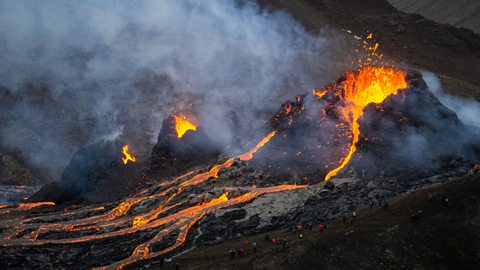
Magma, a mixture of hot, molten rock and gas, builds up deep beneath the surface of the Earth under enormous pressure. The magma rises, looking for weaknesses through rocks in the Earth’s crust.
Volcanoes are usually found along the boundaries of tectonic plates.
Constructive plate boundaries are where tectonic plates are moving apart, and magma here can gradually rise and form new crust, usually without any violent eruptions.
Destructive plate boundaries are where tectonic plate boundaries are colliding or pushing against each other. The intense pressure involved can create new magma which then rises to the surface through volcanic vents in explosive eruptions.
When magma erupts from a volcano it is called lava. This mixture of lava and gas flows out and down the sides of a volcano, some may cool and erupt as ash.

Activity: Quiz – Volcanoes
SATs preparation resources. activitySATs preparation resources
Get ready for the SATs papers with videos, activities, quizzes and games to refresh your knowledge and practise your skills.

More on The natural world
Find out more by working through a topic
- count5 of 16
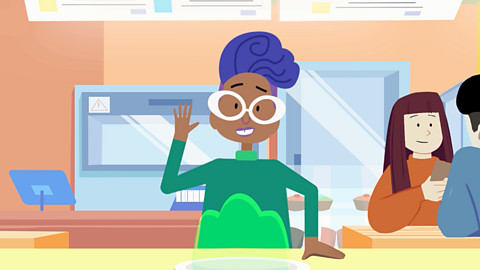
- count6 of 16

- count7 of 16
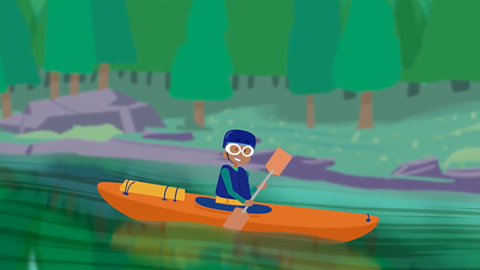
- count8 of 16
